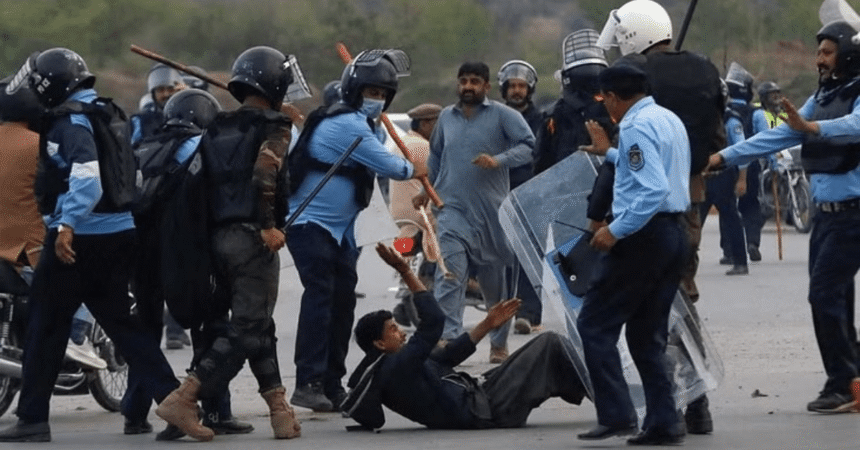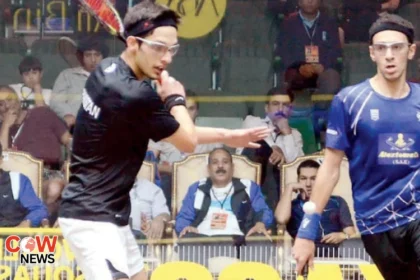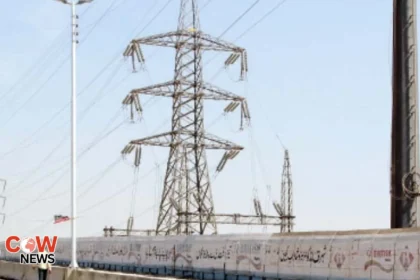On Saturday, tensions escalated dramatically as Pakistan Tehreek-e-Insaf (PTI) workers clashed with police near Attock Bridge while attempting to reach Rawalpindi for a scheduled protest demonstration at Liaquat Bagh. The confrontation highlights the ongoing political unrest in Pakistan and raises concerns about the state’s response to political gatherings.
Background of the Situation
The PTI, led by former Prime Minister Imran Khan, has been actively organizing protests across the country as part of its strategy to rally support against the current government. The demonstration planned for Liaquat Bagh was expected to draw significant attendance from PTI supporters, particularly from various cities in Punjab and Khyber Pakhtunkhwa. This mobilization is part of a broader campaign to challenge government policies and advocate for political reforms.
As the protest date approached, the Attock District Administration took preemptive measures to prevent the gathering. Section 144 was imposed in the area, effectively banning all forms of political assembly. The authorities also sealed off multiple entry and exit points, reinforcing security measures on GT Road and Motorway M-1 to deter participants from reaching Rawalpindi.
crossorigin=”anonymous”>The Clash at Attock Bridge
A caravan of PTI supporters, traveling from different cities in Punjab, encountered roadblocks at Attock Bridge. As they attempted to proceed, they were met with a heavy police presence, leading to a heated exchange of words. Eyewitnesses reported that the atmosphere quickly escalated from verbal confrontations to physical clashes.
The police, following standard protocol in such situations, fired tear gas shells to disperse the gathering crowd. The use of tear gas has become a common tactic employed by law enforcement during political demonstrations, aimed at controlling and managing large groups of protesters. However, this often leads to further unrest and intensifies the conflict between demonstrators and security forces.
Reactions from PTI Leadership
Following the clash, PTI leadership condemned the police’s actions, calling them an infringement on democratic rights. Party officials accused the government of stifling dissent and undermining citizens’ freedom to assemble peacefully. They argued that such aggressive tactics would not deter PTI supporters but instead galvanize their resolve to protest against what they view as authoritarian measures.
Imran Khan, in a series of social media posts, expressed solidarity with the PTI workers and emphasized the party’s commitment to challenging government oppression. He encouraged supporters to remain peaceful but firm in their resolve to participate in the protest, underscoring the importance of public mobilization in their fight for democratic rights.
crossorigin=”anonymous”>Government’s Justification for Security Measures
The government, on the other hand, defended its actions as necessary for maintaining law and order. Officials cited intelligence reports indicating potential violence and unrest, asserting that the imposition of Section 144 was a proactive measure to prevent clashes and protect public safety. They argued that previous protests had resulted in significant disruptions and were keen to avoid similar incidents.
The administration’s approach reflects a broader trend in recent years where state authorities have increasingly resorted to heavy-handed tactics in response to political dissent. This has sparked a debate about the balance between ensuring public order and upholding democratic freedoms.
Implications for Political Stability
The clash at Attock Bridge is emblematic of the growing polarization in Pakistan’s political landscape. As PTI continues to mobilize support, the government faces the challenge of managing dissent while maintaining its authority. The situation raises critical questions about the future of political discourse in the country and the potential for further unrest.
Political analysts suggest that the government’s heavy-handed approach could backfire, provoking greater public outrage and further entrenching the PTI’s support base. The cycle of confrontation could lead to a more volatile environment, complicating efforts for dialogue and reconciliation.
crossorigin=”anonymous”>Community Reactions
Local communities in Attock and surrounding areas reacted to the clashes with mixed feelings. Some expressed support for the PTI and its efforts to challenge the government’s policies, viewing the protests as a vital expression of democratic rights. Others, however, voiced concerns about the potential for violence and disruption, fearing that such clashes could escalate into broader conflicts.
Residents reported a tense atmosphere in the area, with heightened security and a noticeable police presence. Many expressed frustration over the ongoing political turmoil and called for a peaceful resolution to the crisis. Community leaders urged both the government and PTI to engage in dialogue rather than resorting to confrontational tactics.
The Broader Political Context
The clashes at Attock Bridge occur against a backdrop of significant political upheaval in Pakistan. The PTI has faced numerous challenges since Imran Khan was ousted from power in April 2022, leading to widespread discontent among his supporters. The party’s current strategy focuses on mobilizing grassroots support to challenge the incumbent government and demand early elections.
The current government’s response to PTI’s protests reflects a broader trend in global politics, where authoritarian tendencies are emerging in various democracies. Governments often grapple with how to manage dissent without alienating segments of the population that feel disenfranchised or marginalized.
Future Protests and Political Dynamics
Looking ahead, the potential for further protests remains high, particularly as the PTI continues to organize rallies across the country. Political analysts predict that the government will maintain its hardline stance, especially in regions where PTI has a strong support base. The prospect of more clashes looms large, as both sides seem unwilling to back down.
The situation also raises questions about the role of law enforcement in political protests. Calls for police reform have gained traction, emphasizing the need for more training in conflict resolution and community engagement. Advocates argue that police should prioritize de-escalation tactics to prevent violence during protests, allowing citizens to exercise their rights without fear of reprisals.
crossorigin=”anonymous”>International Perspectives
The international community is closely monitoring the situation in Pakistan, particularly concerning human rights and democratic freedoms. Organizations such as Amnesty International and Human Rights Watch have voiced concerns about the government’s crackdown on dissent and the use of excessive force by law enforcement.
As Pakistan navigates this complex political landscape, the response from the international community could influence the government’s approach to dissent. Increased scrutiny from foreign governments and NGOs may prompt local authorities to reconsider their tactics in managing protests.
The Day’s Events
As the day unfolded, the events at Attock Bridge served as a critical flashpoint in Pakistan’s ongoing political struggle. The clash between PTI workers and police highlighted the underlying tensions and frustrations that have characterized the political landscape in recent years. As the situation develops, it remains to be seen how both the government and opposition will navigate the challenges ahead.
#PTI #Protest #AttockBridge #ImranKhan #PoliticalClash #PakistanNews #CivilRights







